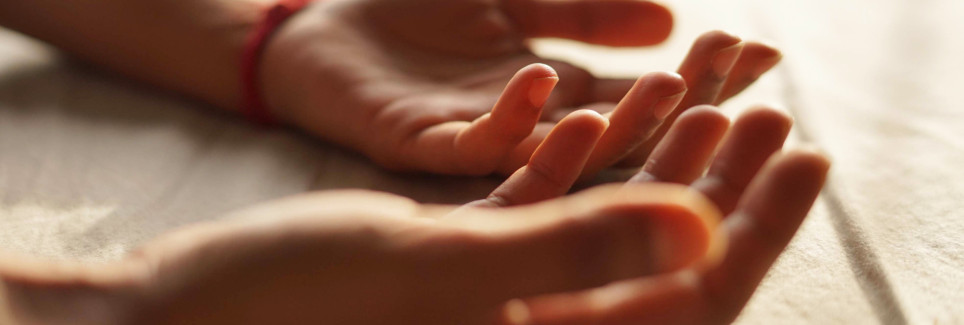Is this a massage?
No. There can be confusion about this because some massage therapists incorporate craniosacral techniques, however craniosacral therapy in the biodynamic tradition that I practice uses a very light touch.
Do I need to take off my clothes?
You will remain fully clothed. The priority in a session is for you to feel comfortable and safe. It is recommended that you wear something comfortable for your session, so avoid tight or restrictive clothing.
How does biodynamic craniosacral therapy work?
Think about when you cut your thumb. Your blood clots and forms a scab, which then falls off, revealing new skin. Your body knows how to heal itself.
In a craniosacral session, we create an environment that support this innate ability. The practitioner uses her hands to assess where your body is holding tension patterns, and where there is health. Your body is then allowed to lead the session, with the practitioner paying close attention to where and how this process can be supported.
We will work in a biodynamic style, which means that I do not apply a predetermined protocol or use manipulations.
How much talking happens in a session?
This is a body-centred practice however, during the session, the practitioner may ask questions or draw your attention to certain areas of your body. Ultimately, dialogue is used only if it will support the process. You can share as much or as little of your personal story as you wish. You can read more about what happens in a session here.
Is this Reiki?
Biodynamic craniosacral therapy has an energetic aspect but it is not Reiki and it does not involve the practitioner ‘giving’ energy to the client. Rather, the practitioner supports the client’s system to access its own resources.
Is this energy work?
All forms of bodywork have an energetic component. At the same time, this work is grounded in the body’s tissues and fluids. Craniosacral therapy has its roots in osteopathy and my approach is informed by Pre- and Peri-natal psychology.
What is your training?
I completed an international 2-year biodynamic craniosacral therapy practitioner training, grounded in anatomy, physiology and palpation skills. This training is informed by Peter A. Levine’s approach to calming the autonomic nervous system as well as Stephen W. Porges’ work on the embodied experience of safety, which is understood as essential for self-regulation.
I continue to extend my learning through Pre- and Peri-natal attachment work, as the patterns we can’t seem to escape from often have roots in our formative years.
I have also studied Visionary Craniosacral Work {Levels 1 + 2} with Hugh Milne, who describes the purpose of this work as: “To create a free body, a clear mind and an open heart.”
This is all supported by a wealth of experience from working in public health, ongoing studies in neuroscience, psychology and anatomy, and a lifelong commitment to yogic science and contemplative practices.
For more, see the FAQs on the website of the Biodynamic Craniosacral Association of North America.
{Got a question? Get in touch!}

